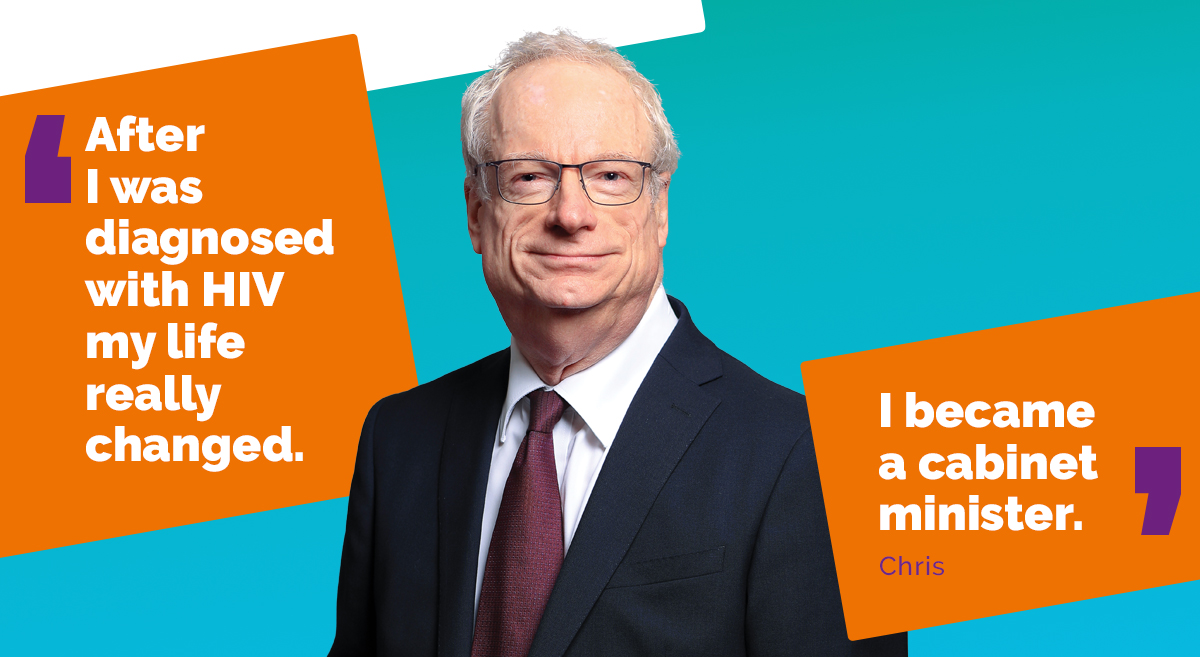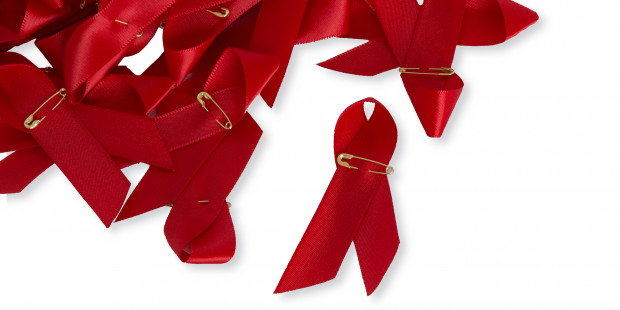
How common is HIV in the UK?
The most recent UK-wide estimate is that around 113,500 people are living with HIV in the UK. Of these, over 5,200 are undiagnosed and do not know they are living with HIV. Most recent data shows 4,700 people are living with undiagnosed HIV in England and 500 in Scotland, with figures for Wales unavailable at this time.
New diagnoses have been increasing since 2021. Prior to 2021, new diagnoses were declining since their peak in 2005. In 2023, there were 6,512 HIV diagnoses in the UK excluding Northern Ireland, a 46% rise from 2022. 6,008 people were diagnosed with HIV in England in 2023, 270 in Scotland and 119 in Wales.
Anyone can get HIV but people from some groups or parts of the world are more likely to be affected. In particular, men who have sex with men and Black African people are disproportionately affected.
Progress towards achieving the 2030 goal to end new cases of HIV
In November 2024, the UK Health Security Agency (UKHSA) stated that it is unlikely that we will meet the 2025 targets, but the 2030 target of zero new HIV transmissions is within our reach. The HIV Action Plan set an interim target of an 80% reduction in new HIV infections in England by 2025 comparing the 2019 diagnosis figure of 2,819. Considering that the figure of those first diagnosed in England in 2023 was 2,810, a figure nearly the same as in 2019, we are clearly off-track to achieve the 2025 goal, and therefore the 2030 goal.
HIV testing is essential so that everyone living with HIV can be offered lifesaving treatment, which also prevents onward HIV transmission. There has been some progress in getting back testing to pre-COVID levels in sexual health services, but they are still 4% lower than pre-COVID. Testing among gay and bisexual men is at record levels, but for heterosexual men testing rates are still 22% lower than pre-COVID.
It is encouraging to note that PrEP access has been improving in the UK, however, there are still challenges for equal access for all who might benefit from it.
HIV diagnoses
HIV diagnoses in England in 2023
Data from the UK Health Security Agency (UKHSA) shows that 6,008 people were diagnosed with HIV in England in 2023.
- 53% (3,198 of 6,008) of people diagnosed in England were reported as previously diagnosed abroad. 70% of those with a reported viral load were virally suppressed within a month of their diagnosis in England showing access to HIV treatment abroad; people with an undetectable viral load cannot pass on HIV.
- The number of new diagnoses is rising. In 2023, the number of HIV diagnoses first made in England increased by 15%. Diagnoses increased by 7% in gay, bisexual and other men who have sex with men, a reversal of the declines seen in recent years. Diagnoses increased by 32% in heterosexual men and women. People from ethnic minorities from both these groups were disproportionately impacted, with new diagnoses rising fastest in these groups.
- Of the 2,810 people first diagnosed in England, 29% were gay, bisexual or other men who have sex with men. Nearly half (49%) of all new diagnoses first made in England were among people exposed through sex between men and women. Of the 1,385 heterosexual people diagnosed with HIV in England in 2023, 50% were of Black African ethnicity.
- London continues to have the highest rates of HIV in England, but in 2023 increases were concentrated outside of London – the capital saw a 9% increase in diagnoses amongst heterosexual men, but outside of London there was a 51% increase. Women experienced a 44% increase (413 to 595) in diagnoses outside London and a 2% decrease among women living in London.
- Of those diagnosed with HIV in England in 2023, 40% were diagnosed at a late stage (when HIV has already started to damage the immune system). People aged 50 years and over had the highest proportions of late diagnosis (53% for those aged 50 to 64 years, 55% for those aged 65 years and over). 51% of heterosexual men, 44% of people of Black African ethnicity, 43% of people with Asian ethnicity, and 42% of women were diagnosed late.
The impact of opt-out HIV testing in emergency departments (EDs) on the rise in new diagnoses first made in England is detailed in the latest HIV Action Plan report. UKHSA states that opt-out testing has made a huge contribution in relation to the provision of HIV testing in areas of very high diagnosed HIV prevalence since April 2022.
HIV diagnoses fell by 12% from 2,801 in 2019 to 2,451 in 2022 but rose again by 15% to 2,810 in 2023. In London, this increase between 2022 and 2023 is likely due to the contribution of the ED opt-out testing programme. However, outside of London and excluding the opt-out testing programme, new HIV diagnoses have risen by 21% and have been mainly among people exposed through heterosexual sex.
HIV diagnoses in Scotland in 2023
There are now an estimated 6,761 people living with HIV in Scotland, 93% (6,288) of whom are diagnosed. Around 500 people in Scotland are estimated to be living with undiagnosed HIV.
270 people were diagnosed with HIV in Scotland in 2023. Of these, 148 were first ever HIV diagnoses.
- New first ever HIV diagnoses saw a 10% increase in 2023 from rates in 2022.
- The recent trend of heterosexual diagnoses outnumbering that among gay, bisexual and other men who have sex with men is continuing in Scotland. Of those first diagnosed with HIV in Scotland in 2023, 27% were among gay, bisexual or other men who have sex with men, 49% were heterosexually acquired and around 7% were linked to people who inject drugs.
- In Scotland, 16% of first ever diagnoses in 2023 were at a late stage.
HIV diagnoses in Wales in 2023
There were 119 new HIV diagnoses in the Wales in 2023, a 16% increase from the previous year. It is estimated that between 11 and 18% of people living with HIV in Wales are currently unaware that they are living with the virus.
- The majority of new HIV diagnoses were amongst heterosexuals (62%).
- Diagnoses have decreased by 15% since 2019 among gay, bisexual and other men who have sex with men in Wales.
- 31% of people with HIV were diagnosed late, when HIV has already begun to damage a person’s immune system.
- The Welsh Government last year published its HIV Action Plan, with the aim of ending new cases of HIV by 2030 and tackling HIV stigma in Wales.
PrEP
PrEP in England
PrEP uptake has been increasing but inequalities remain with unmet needs particularly amongst heterosexuals.
- 85.2% of gay, bisexual and other men who have sex with men who had a PrEP need, had that need identified when accessing sexual health services in England, compared to 60.8% of heterosexual men and 62.2% of heterosexual and bisexual women.
- Initiation or continuation of PrEP among those with a PrEP need was highest in gay, bisexual and other men who have sex with men at 75.4% compared to 39.0% in heterosexual men and 40.9% in heterosexual and bisexual women.
PrEP in Scotland
Uptake of PrEP has increased in Scotland with 1,277 people attending sexual health services to access PrEP for the first time.
Since July 2017, 11,413 individuals have been prescribed PrEP in Scotland.
HIV care outcomes
HIV care outcomes in England
In 2023, 100,063 people were accessing HIV care in England compared to 94,569 in 2022.
- The average age of people living with HIV in the England is getting higher – over half of people (51%) receiving specialist HIV care in 2023 were over 50, compared to one in five in 2007.
- There were 233 trans and gender diverse people accessing HIV care in England in 2023, compared to 230 in 2022.
- Treatment coverage in adults accessing care in England remained at 98% (98,525 of 100,063).
- 98% (90,942 of 93,099) of people living with diagnosed HIV in England in 2023 (with a reported viral load) were virally suppressed and therefore unable to pass on the virus to a sexual partner.
- In 2023, treatment coverage was lowest among people aged 15 to 24 years (96%) and ranged from 98% to 99% for all other age groups.
The UKHSA reports that the UNAIDS 95-95-95 targets were met in England in 2023, with 95% of all those with HIV being diagnosed, 98% of those diagnosed receiving treatment, and 98% of those treated being virally suppressed and therefore unable to pass on the virus. However, the UKHSA acknowledges that when missing data and information for those not in care are taken into account, the estimates for 2023 range from 96%-94%-96% to 96%-94%-92%. We welcome this honest assessment which means that, in reality, England is not reaching the 95-95-95 target. It is estimated that up to 12,065 people in England have been previously diagnosed as living with HIV but are not currently accessing care (known as ‘lost to care’).
HIV care outcomes in Scotland
The Scottish Government has committed to reaching UNAIDS 95:95:95 targets by 2025. As of 2023, 93% of people living with HIV in Scotland are diagnosed; 78% of people attending specialist services are accessing antiretroviral treatment, and 97% of people accessing treatment have an undetectable viral load.
1,115 people in Scotland have been previously diagnosed as living with HIV but are not currently accessing care.
HIV care outcomes in Wales
2,765 people accessed HIV care in Wales in 2023.
Fast Track Cymru has committed to achieving the UNAIDS 95:95:95 targets, as well as reaching zero new transmissions of HIV in Wales by 2030 and the goals of the Wales HIV Action Plan.
The HIV Outcomes in Wales report in is the pipeline. In 2020, of the 2,448 residents of Wales receiving care for HIV 96% had achieved viral load suppression.
More statistics for the UK, England and Wales are available on the Government website:
More statistics for Scotland are available on the Scottish Government website:
The Welsh government has committed to developing a new national data collection system in its HIV Action Plan for Wales. This should give more detail on different populations and local areas.



